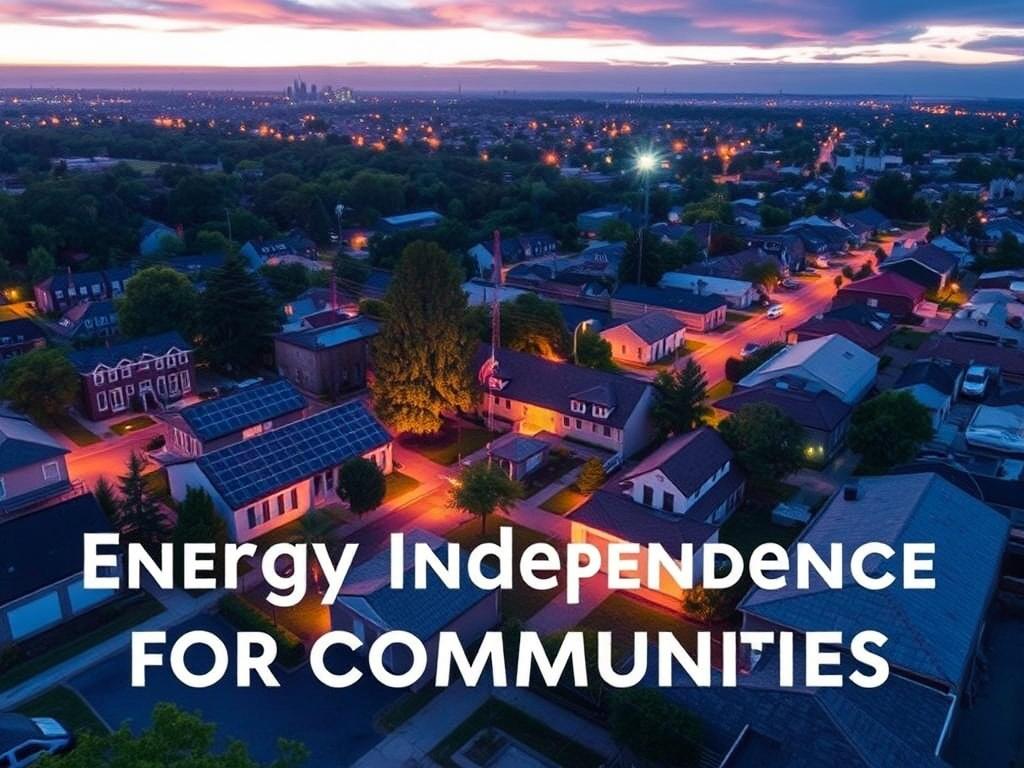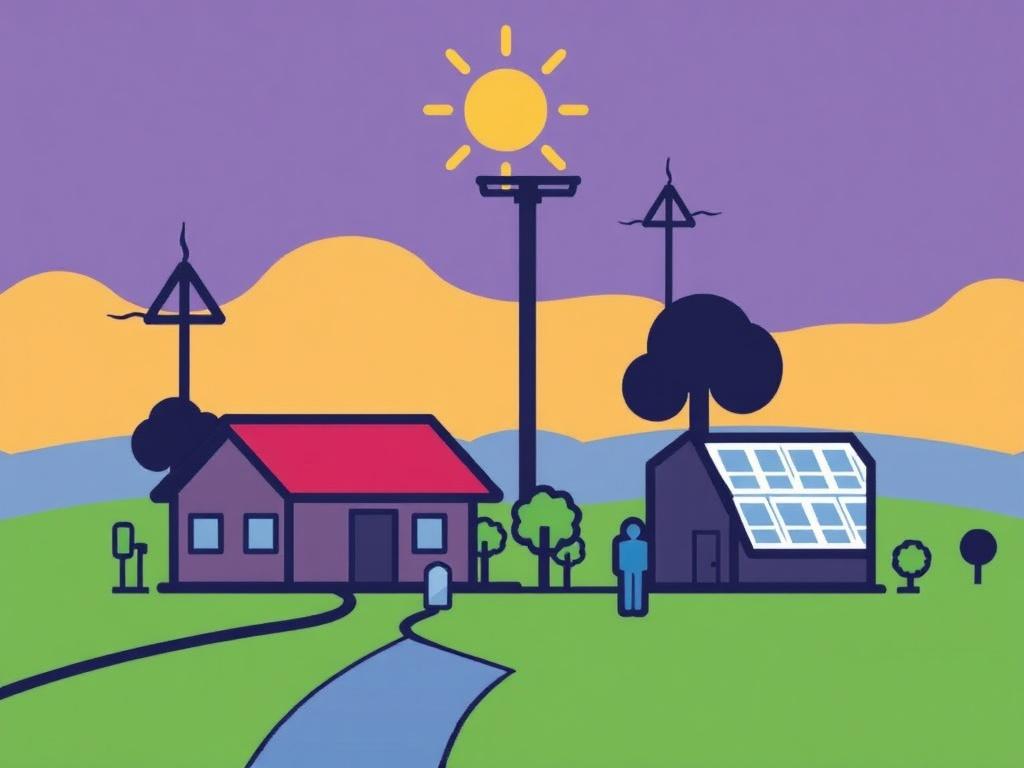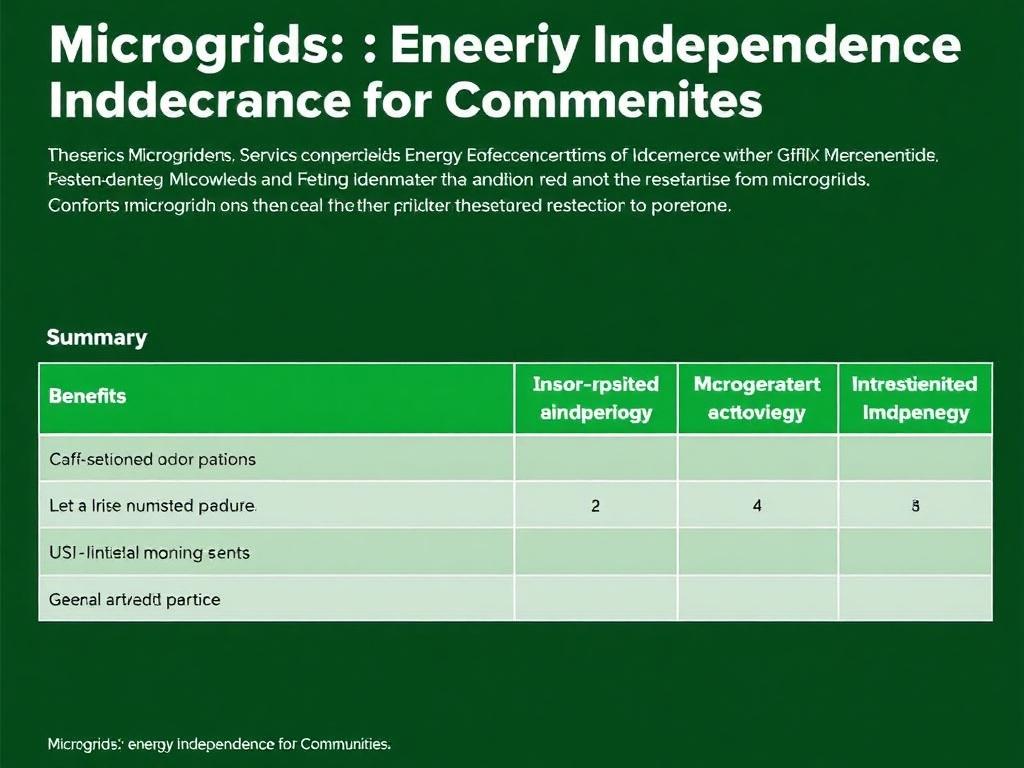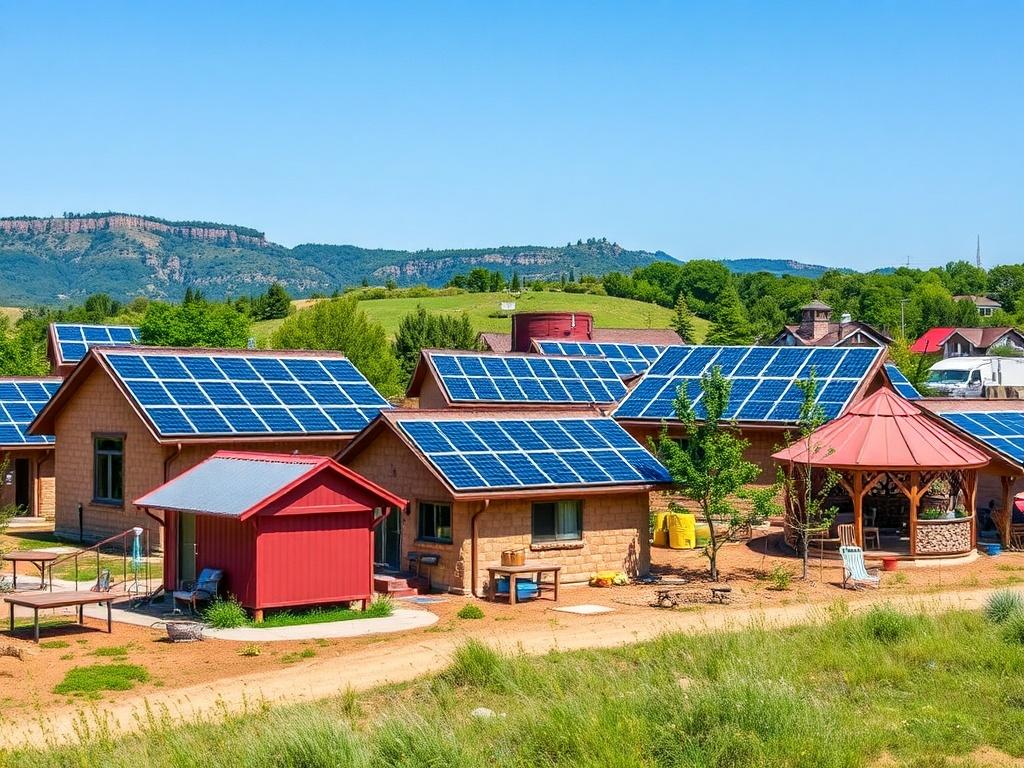- What is a Microgrid?
- Key Components of a Microgrid
- How Do Microgrids Work?
- Types of Microgrids
- Benefits of Microgrids for Communities
- Energy Independence and Resilience
- Enhanced Use of Renewable Energy
- Cost Savings and Economic Growth
- Environmental Impact
- Challenges and Considerations in Microgrid Implementation
- High Capital Costs
- Regulatory and Policy Barriers
- Technical Complexity
- Community Engagement
- Table: Challenges vs. Solutions
- Real-World Examples of Microgrids Driving Energy Independence
- Brooklyn Microgrid, New York
- Sendai Microgrid, Japan
- Kalanggaman Island, Philippines
- The Future of Microgrids in Community Energy Systems
- Microgrids and Grid Modernization
- Microgrids and Energy Equity
- Summary Table: Benefits and Challenges of Microgrids
- Conclusion
As the world seeks sustainable and reliable energy solutions, microgrids have emerged as a powerful tool for empowering communities with energy independence. More than just a buzzword, microgrids represent a revolutionary way for neighborhoods, towns, and institutions to generate, store, and manage their own energy. This shift toward decentralized power promises not only greater energy reliability but also increased resilience against grid outages, enhanced use of renewable resources, and improved environmental outcomes. In this article, we’ll explore what microgrids are, how they work, their benefits, the challenges involved, and why they may be the key to energy independence for communities worldwide.
What is a Microgrid?
At its core, a microgrid is a localized energy system that can operate independently or in conjunction with the main electric grid. Unlike traditional power systems that rely heavily on large, centralized power plants and long transmission lines, microgrids cluster smaller generation sources such as solar panels, wind turbines, and energy storage systems close to where electricity is consumed.
These systems have the intelligence and control mechanisms to disconnect—or «island»—the local network from the larger grid during outages or disturbances, providing uninterrupted power to critical infrastructure and homes. When the main grid is stable, microgrids may operate in tandem, buying or selling electricity as needed to optimize energy use and costs.
Key Components of a Microgrid
To understand how microgrids enable energy independence, it helps to know the main components involved:
- Distributed Energy Resources (DERs): These include renewable energy sources such as solar photovoltaic (PV) panels and wind turbines, as well as traditional generators like diesel or natural gas engines.
- Energy Storage Systems: Batteries or other storage technologies store excess energy generated for use during peak demand or outages.
- Control Systems: Sophisticated software and hardware manage energy supply and demand, ensuring balance and reliability.
- Loads: The electrical devices and appliances that consume electricity within the microgrid.
How Do Microgrids Work?

The operation of a microgrid revolves around balance. The goal is to match electricity supply with demand in real-time while maintaining power quality and reliability. When connected to the main grid, a microgrid can import or export power based on economic or technical factors. For example, if solar generation exceeds consumption during the day, the microgrid can send surplus energy back to the grid or charge batteries.
During grid outages or when stability is compromised, the microgrid automatically isolates itself and runs autonomously, powered by its internal resources. This capability is particularly valuable for critical facilities like hospitals, emergency shelters, and water treatment plants that require uninterrupted electricity.
Several control strategies bring this to life, including:
- Peak Shaving: Reducing electricity use during high-cost or high-demand periods.
- Load Management: Prioritizing essential loads to extend the autonomy of the microgrid during outages.
- Renewable Integration: Maximizing the use of clean energy, reducing dependence on fossil fuels.
Types of Microgrids
Microgrids vary widely based on their size, purpose, and design. Common classifications include:
| Type | Description | Typical Use Cases |
|---|---|---|
| Community Microgrids | Serve residential neighborhoods or small towns with shared energy resources. | Remote communities, suburban areas seeking energy independence. |
| Campus Microgrids | Designed for institutions like universities, military bases, or corporate campuses. | Universities, military installations, industrial complexes. |
| Remote Microgrids | Operate independently of any main grid, often in isolated locations. | Islands, rural off-grid areas, mining sites. |
Benefits of Microgrids for Communities
Microgrids offer compelling advantages for communities looking to take control of their energy future. Let’s examine some of the most significant benefits.
Energy Independence and Resilience
One of the strongest appeals of microgrids is the ability to reduce or eliminate dependence on the traditional centralized grid. This independence means communities can maintain power during outages caused by storms, cyber-attacks, or equipment failures. Energy resilience directly improves public safety, economic stability, and quality of life.
Enhanced Use of Renewable Energy
Microgrids facilitate the integration of distributed renewable energy sources far more effectively than a large grid. With local generation, communities can harness solar, wind, or biomass resources unique to their region. By pairing renewables with energy storage, microgrids smooth out variability and provide reliable clean power.
Cost Savings and Economic Growth
By managing energy locally, microgrids can reduce electricity costs, especially when combined with peak shaving and demand response strategies. Furthermore, investment in local energy infrastructure drives job creation and economic development within the community.
Environmental Impact
Using clean energy technologies reduces carbon emissions and local pollution, contributing to community health and global efforts to combat climate change. Microgrids can also accelerate the phase-out of fossil fuel dependence.
Challenges and Considerations in Microgrid Implementation
While microgrids hold great promise, they are not without challenges. Communities must navigate several technical, financial, and regulatory hurdles.
High Capital Costs
Developing a microgrid requires upfront investment in generation, storage, and control infrastructure. Although costs are decreasing, especially for solar and batteries, securing financing can be difficult for some communities.
Regulatory and Policy Barriers
Electricity markets and regulations vary widely across regions. Rules around grid interconnection, net metering, and energy sales are sometimes unclear or unfavorable for microgrid operators. Policymakers are working to update frameworks, but progress varies.
Technical Complexity
Managing multiple resources, forecasting demand, and maintaining system reliability requires advanced control systems and skilled personnel. Ongoing maintenance and upgrades are essential for optimal operation.
Community Engagement
For community microgrids, involving local stakeholders in planning and decision-making is crucial. Ensuring equitable access and benefits can prevent social divisions and foster widespread support.
Table: Challenges vs. Solutions
| Challenge | Possible Solutions |
|---|---|
| High initial investment | Grants, public-private partnerships, community funding models |
| Regulatory hurdles | Advocacy, pilot projects, working with regulators to clarify rules |
| Technical expertise | Training programs, partnerships with technology providers |
| Community buy-in | Transparent communication, inclusive planning, education campaigns |
Real-World Examples of Microgrids Driving Energy Independence
Across the globe, communities are embracing microgrids to build clean, resilient energy systems. Let’s look at a few inspiring examples.
Brooklyn Microgrid, New York
Brooklyn Microgrid uses a blockchain-enabled platform to allow local residents and businesses to trade solar power peer-to-peer. This innovative microgrid promotes renewable integration, energy independence, and economic empowerment within the community.
Sendai Microgrid, Japan
After the 2011 earthquake and tsunami knocked out much of Japan’s power grid, microgrids like the Sendai system provided critical backup power to hospitals and emergency shelters. This microgrid integrates solar power and battery storage, demonstrating resilience in disaster-prone areas.
Kalanggaman Island, Philippines
This remote island uses a microgrid powered by solar panels and diesel backup to serve its small community, reducing reliance on shipping expensive fossil fuels. The system enhances energy access and promotes environmental conservation.
The Future of Microgrids in Community Energy Systems

With ongoing advances in energy storage, smart grid controls, and renewable technology costs continuing to drop, microgrids are poised for enormous growth. Governments and utilities recognize the role microgrids can play in addressing climate change, grid modernization, and energy equity.
Emerging trends include:
- Hybrid Energy Systems: Combining multiple renewable sources with batteries and demand response for optimal performance.
- Electric Vehicle Integration: Using EVs as mobile energy storage assets within microgrids.
- Advanced Analytics and AI: Improving forecasting and energy management through big data and machine learning.
- Community Ownership Models: Expanding cooperative and municipal microgrid projects for local control and benefits.
Microgrids and Grid Modernization
As the electric grid transforms, microgrids are integral to a more flexible, resilient energy landscape. They can relieve grid congestion, provide ancillary services, and improve reliability. Utilities are increasingly partnering with community microgrids rather than competing with them, recognizing the shared goal of secure energy delivery.
Microgrids and Energy Equity
In underserved communities, microgrids can provide affordable, clean power where traditional grid investments are lacking. By engaging residents in design and operation, microgrids offer a pathway toward social and environmental justice.
Summary Table: Benefits and Challenges of Microgrids

| Benefits | Challenges |
|---|---|
| Energy independence and resilience | High upfront costs |
| Integration of renewable energy | Regulatory uncertainty |
| Cost savings and local economic development | Technical complexity |
| Reduced environmental impact | Community engagement barriers |
Conclusion
Microgrids represent a transformative opportunity for communities striving for energy independence, resilience, and sustainability. By localizing energy generation and management, microgrids provide critical backup power during outages, reduce reliance on fossil fuels, and unlock economic and environmental benefits. While challenges like financing, regulation, and technical complexities remain, ongoing innovation and supportive policies are rapidly expanding the role of microgrids worldwide. As communities increasingly invest in these adaptable energy systems, microgrids will be crucial drivers of the clean energy transition and the future of decentralized, community-focused electricity. Whether in bustling urban neighborhoods or remote rural areas, microgrids offer an inspiring vision of energy independence that empowers people to take charge of their own power destiny.
Как вам статья?







